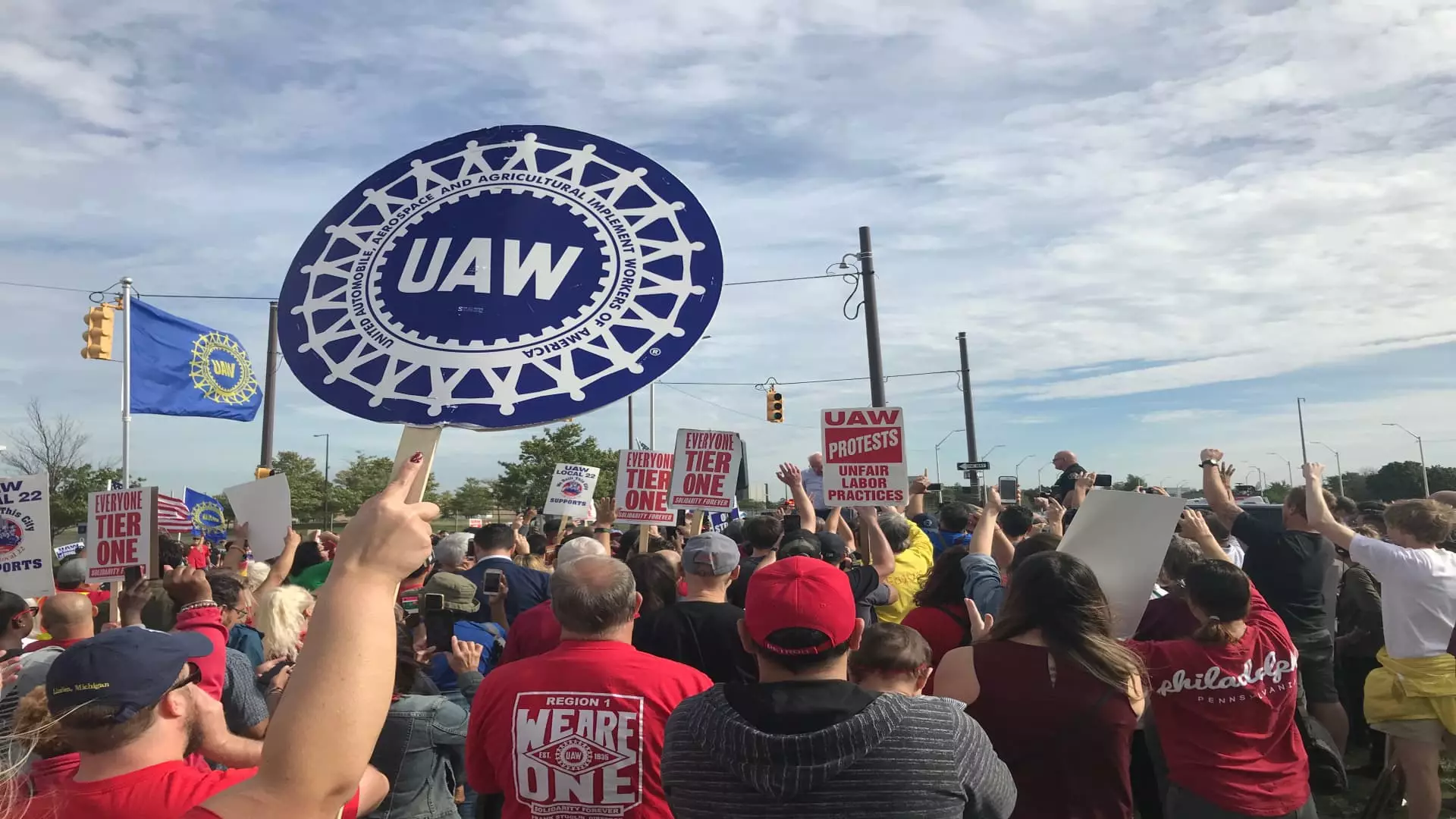As contract negotiations continue between the United Auto Workers (UAW) and major automakers, General Motors, Ford Motor, and Stellantis, the possibility of strikes has become a prominent concern. UAW members have overwhelmingly granted union leaders authorization to call strikes, although final vote tallies are still being determined. This article explores the implications and potential consequences of such strikes in the auto industry.
The recent vote for strike authorization, with an average approval rate of 97%, echoes the level of support observed during negotiations four years ago. However, it is important to note that this vote merely serves as a procedural step in the negotiations and does not guarantee the occurrence of a strike. UAW President Shawn Fain emphasized that the union’s primary objective is to secure favorable agreements for its members, rather than resorting to strikes. Fain has been more vocal than previous union leaders about using strikes as a weapon in negotiations, particularly targeting the “Big Three” automakers. Nevertheless, negotiations are ongoing, and both sides hope to reach mutually beneficial outcomes without industrial action.
The UAW’s demands in this round of negotiations are more extensive compared to previous contract negotiations. The union is seeking a 46% wage increase, the reinstatement of traditional pensions, cost-of-living adjustments, a reduction in the workweek to 32 hours, and enhanced retiree benefits. These demands demonstrate the UAW’s commitment to improving the conditions and benefits for its members.
If strikes were to occur, they could take different forms, such as a national strike encompassing all workers under the contract or targeted work stoppages at specific plants to address local contract issues. Fain has suggested that a complete strike against all three automakers would have the greatest impact. Nevertheless, such a large-scale strike comes with significant risks and costs for the union. It is necessary to weigh the potential benefits against these potential drawbacks to determine the most effective strategy for achieving the union’s goals.
Both national and targeted strikes would have detrimental effects on the automakers. A previous 40-day strike against GM in 2019 resulted in a production loss of 300,000 vehicles and cost the company approximately $3.6 billion in earnings. These figures highlight the substantial financial consequences that strikes can have on businesses. Automakers must carefully evaluate the potential risks and consider the impact on their operations, supply chains, and profitability when navigating negotiations with the UAW.
To support its members in the event of a strike, the UAW has amassed a strike fund of over $825 million. This fund is used to provide eligible members with strike pay, currently set at $500 per week. The fund’s size suggests that the union could sustain strike pay for approximately 11 weeks based on the assumption of 150,000 UAW members covered by the contracts. However, it is essential to note that healthcare costs, including temporary COBRA plans, could deplete the fund more rapidly. Consequently, the union needs to factor in these healthcare expenses when assessing its financial preparedness for potential strikes.
As contract negotiations continue between the UAW and major automakers, the potential for strikes remains a significant consideration. The recent overwhelming approval for strike authorization indicates the union’s willingness to use this strategy as a bargaining tool. However, both sides recognize the importance of reaching mutually satisfactory agreements without resorting to industrial action. The ultimate goal is to secure favorable conditions, wages, and benefits for UAW members, enhancing their overall well-being within the auto industry.


Leave a Reply